What is Shotcrete? Understanding Its Uses and Comparison to Gunite
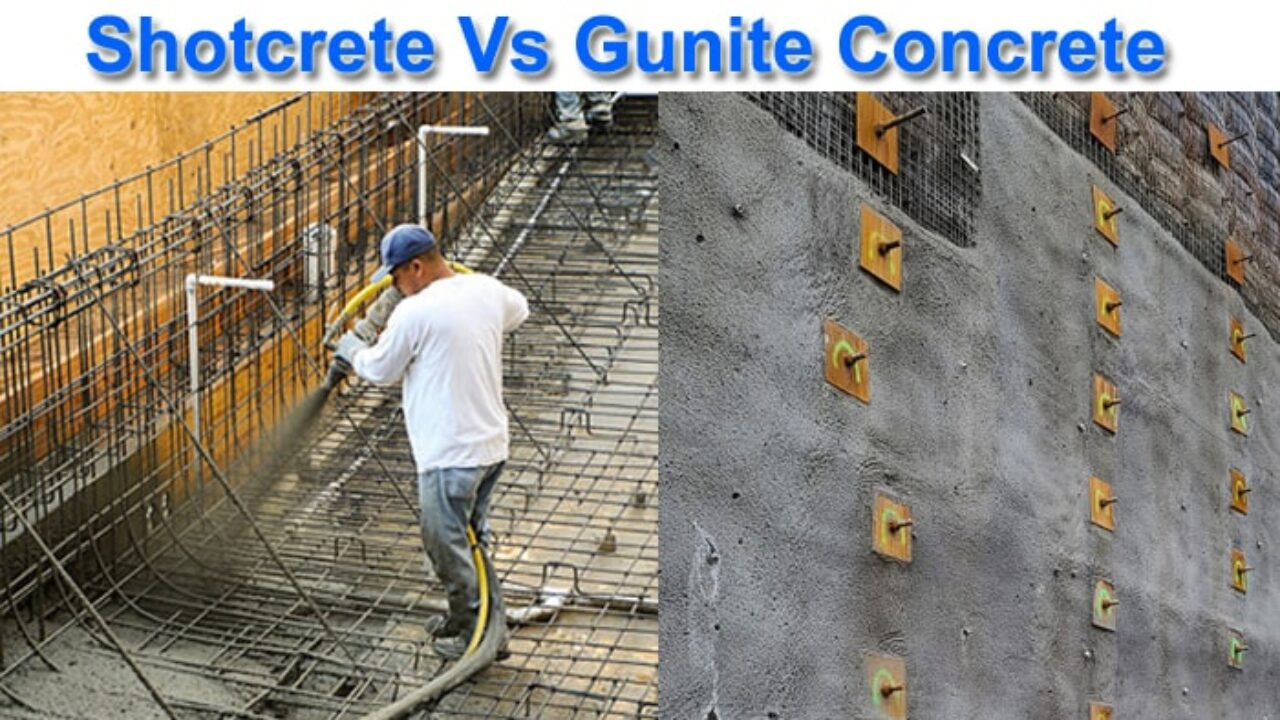
Have you ever wondered what shotcrete is and what its used for? Shotcrete is a construction method where concrete is sprayed onto a surface, typically using a hose and a nozzle. The use of shotcrete has become increasingly popular in recent years, especially in the construction of swimming pools and other concrete structures. In this blog, we will discuss the basics of shotcrete, its applications, and how it differs from traditional concrete.
What is Shotcrete and How is it Made?
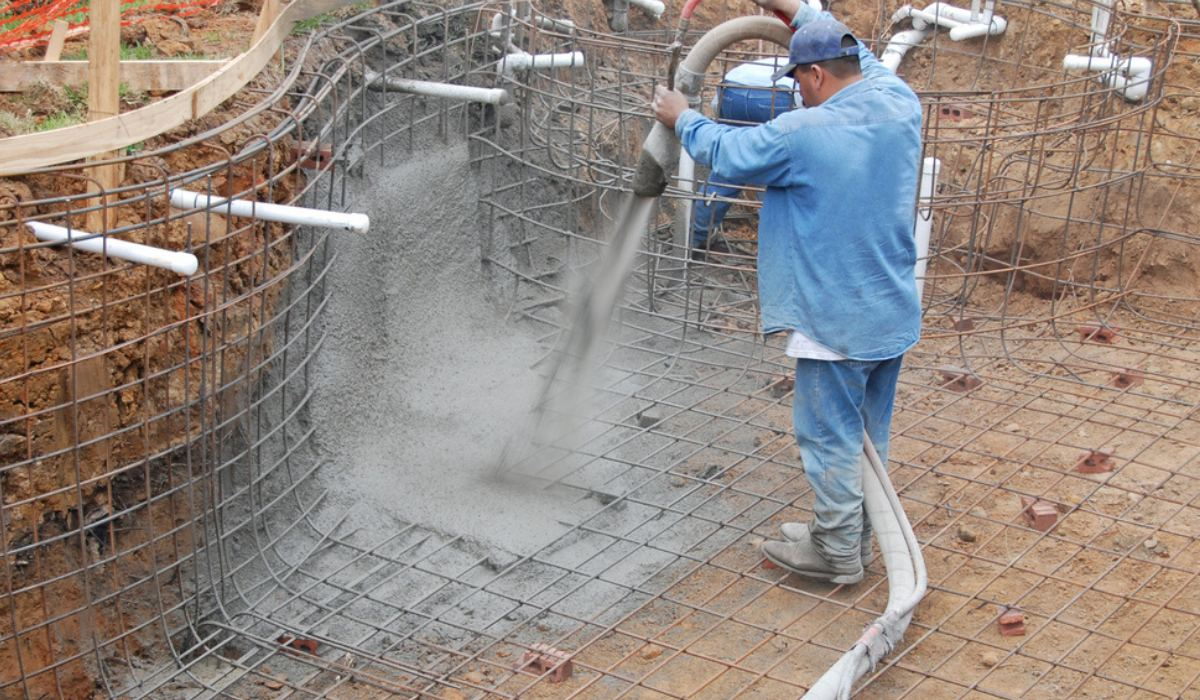
Shotcrete is a type of sprayed concrete, which is applied using high-pressure air to force the wet or dry mix through a hose and out of a nozzle. This process enables the concrete to be applied in a more controlled and precise manner compared to traditional poured concrete.
There are two main types of shotcrete: wet mix and dry mix. The wet mix process involves pre-mixed concrete, while the dry mix process uses a dry mixture of cement, sand, and other materials which is combined with water at the nozzle.
Wet Mix Shotcrete Process
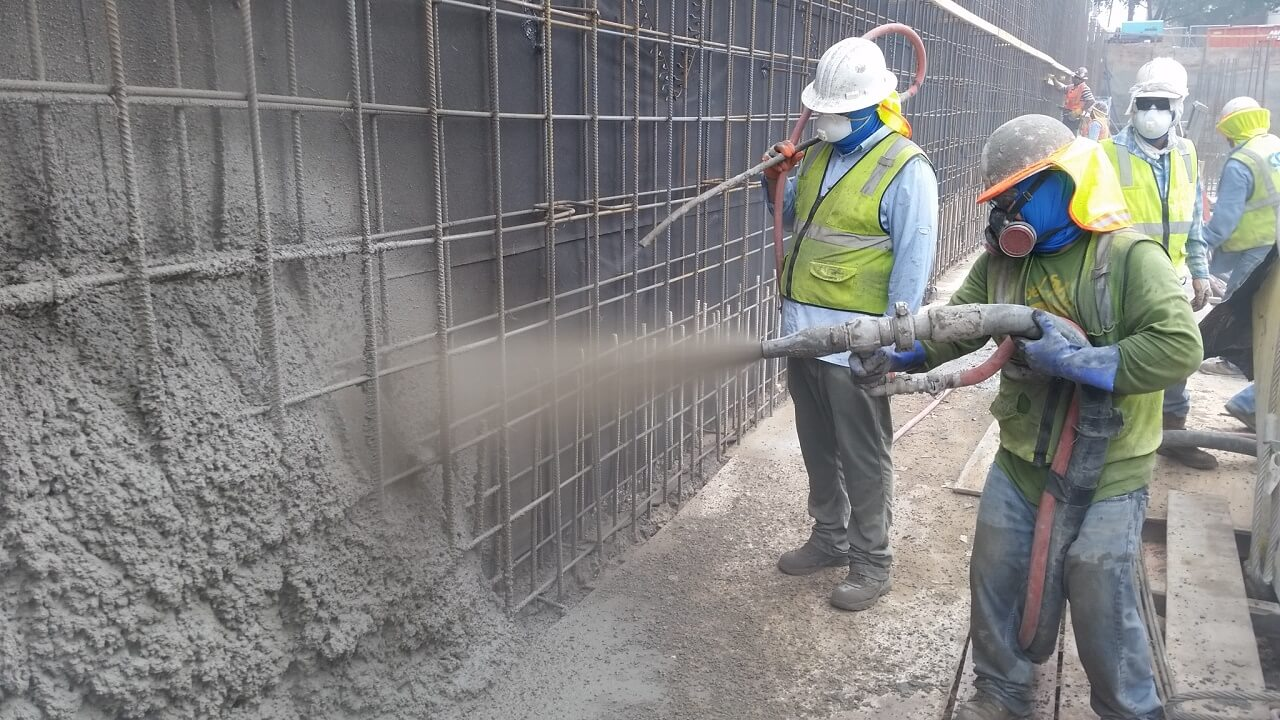
In the wet mix process, all ingredients (cement, sand, gravel, and water) are pre-mixed before being pumped through the hose. The wet mix is then sprayed onto the desired surface at high pressure using compressed air. This method has the advantage of a more consistent and homogeneous mixture, which results in a stronger and more durable final product.
Dry Mix Gunite Process
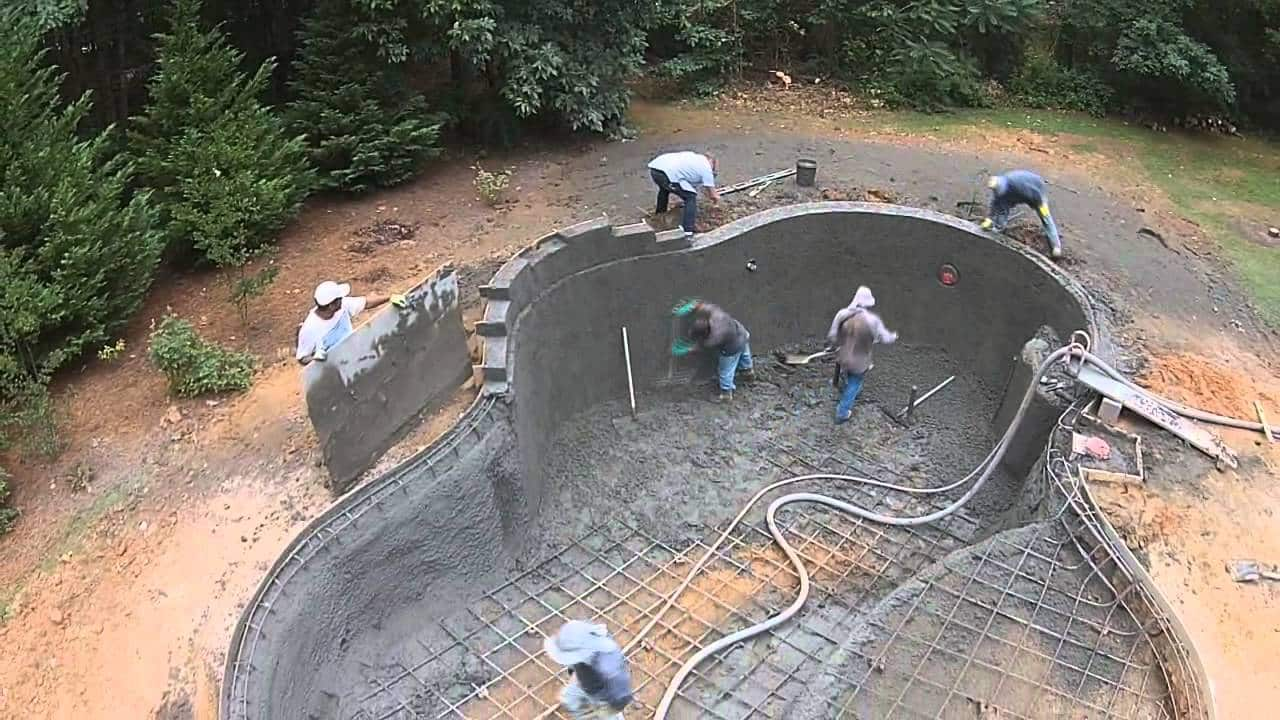
With the dry mix process, the dry material (cement, sand, and other materials) is transported through the hose using compressed air. Water is added at the nozzle, creating the concrete mixture as it is sprayed onto the surface. This method, also known as gunite, allows for more control over the water-to-cement ratio and is often used in pool construction due to its ability to create a porous surface that can be easily finished with plaster, tile, or stone.
Shotcrete vs. Traditional Concrete: What’s the Difference?
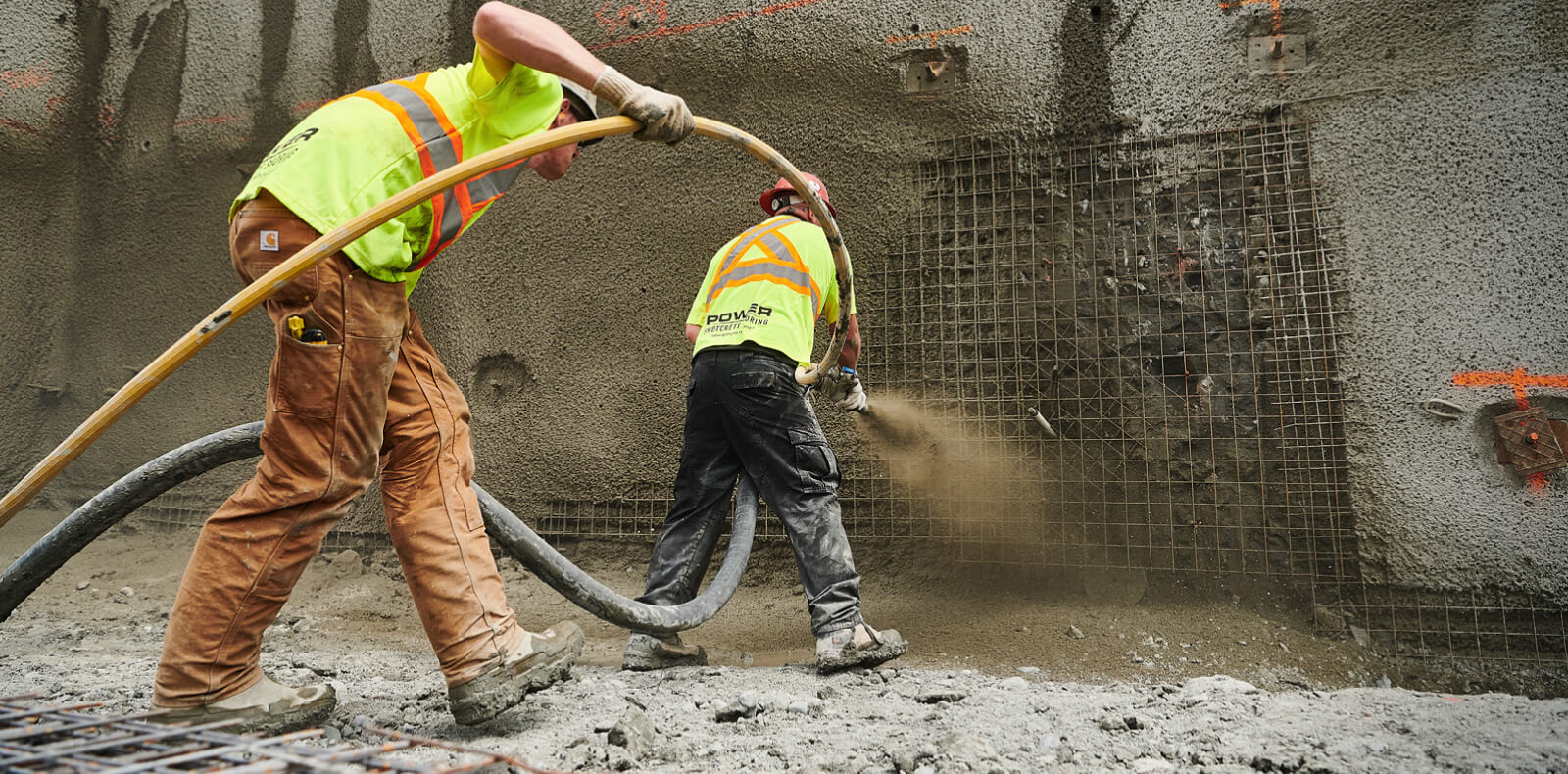
While both shotcrete and traditional concrete are made from the same basic materials (cement, sand, and aggregates), the key difference lies in the application process. Traditional concrete is poured into forms and allowed to harden, while shotcrete is sprayed onto a surface, allowing for greater control and precision in its application. Shotcrete also has the advantage of being able to bond with irregular surfaces, making it an ideal choice for projects with unique shapes or complex designs.
Applications of Shotcrete in Construction
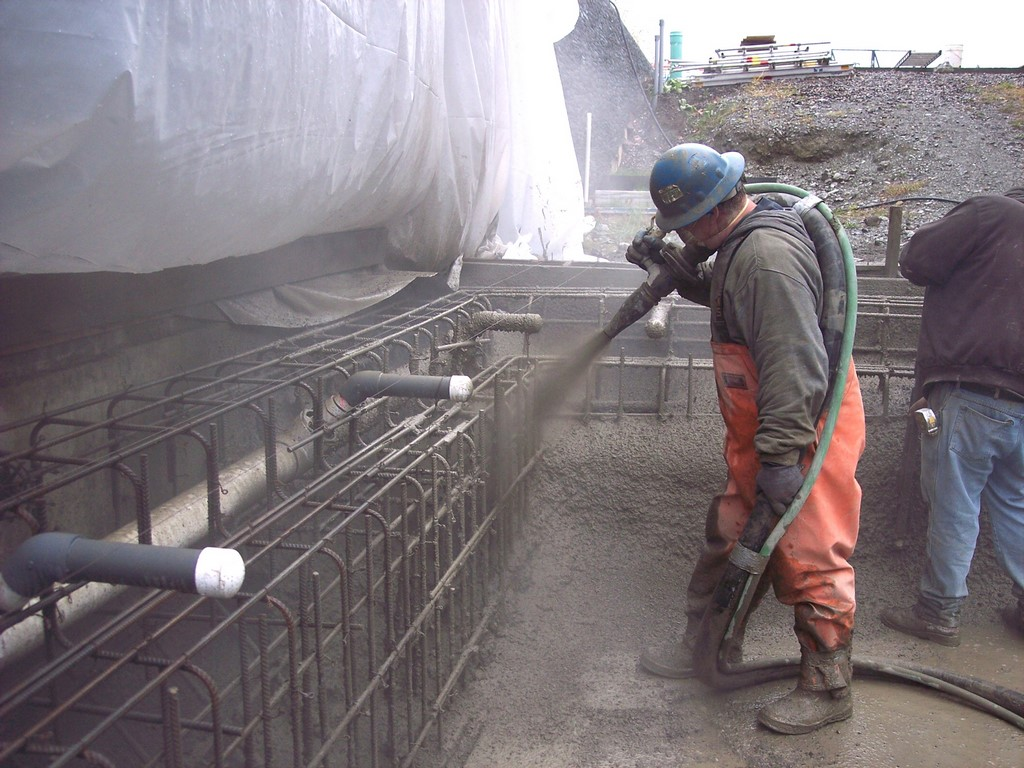
Shotcrete has a wide range of applications in construction, including:
Swimming pools: Gunite pools, which are created using the dry mix shotcrete process, are a popular choice for their durability and design flexibility.
Retaining walls: Shotcrete can be used to reinforce soil and create strong, stable retaining walls.
Tunnel linings: The sprayed concrete can be applied to the interior of tunnels, providing structural support and preventing collapse.
Bridge repairs: Shotcrete can be used to repair and strengthen existing concrete structures, such as bridges.
Slope stabilization: The application of shotcrete can help stabilize steep slopes and prevent erosion.
Comparing Shotcrete and Gunite Pools
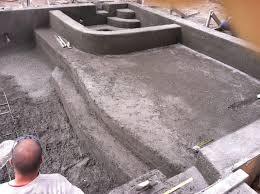
As mentioned earlier, gunite is a term often used to describe the dry mix shotcrete process, particularly when it comes to swimming pool construction. Both concrete and gunite pools are built using a rebar framework, which is then covered with the sprayed concrete. The main difference between the two lies in the application process: concrete pools are created using the wet mix shotcrete method, while gunite pools utilize the dry mix process.
Gunite pools tend to be more popular due to their durability, design flexibility, and porous surface, which allows for easier finishing with plaster, tile, or stone. Concrete pools, on the other hand, offer a smoother surface and can be more cost-effective in some cases. Ultimately, the choice between a concrete pool and a gunite pool will depend on factors such as budget, design preferences, and the specific needs of your project.
Conclusion
In summary, shotcrete is a versatile and efficient construction method that offers numerous advantages over traditional concrete pouring. Its unique application process allows for greater design flexibility, faster construction times, and a more durable final product. Whether you are considering a swimming pool, retaining wall, or other construction project, shotcrete is an option worth exploring. With a better understanding of what shotcrete is and how it differs from traditional concrete, you can make an informed decision about the best construction method for your needs.
The Sustainability of Concrete: Why It Matters
The Sustainability of Concrete: Why It Matters Welcome to the...
Read MoreUnderstanding Concrete Slump Tests: The Complete Guide
Understanding Concrete Slump Tests: The Complete Guide Slump tests are...
Read MoreAn In-Depth Guide to Concrete Delivery Safety Procedures and Best Practices
Understanding the Complexity of Concrete Work Concrete work is a...
Read MoreHow to Select the Right Concrete Supplier in Calgary
How to Select the Right Concrete Supplier in Calgary Introduction...
Read More